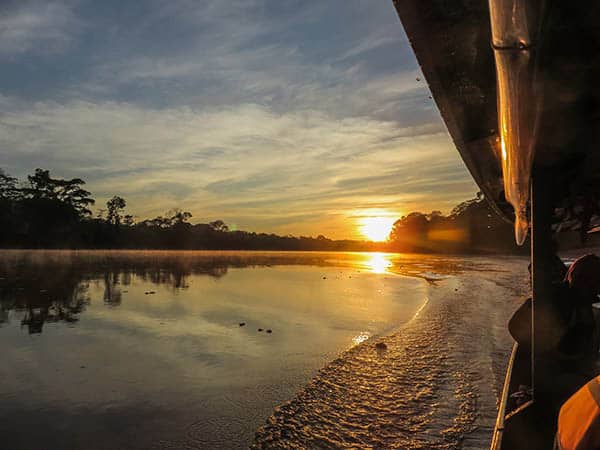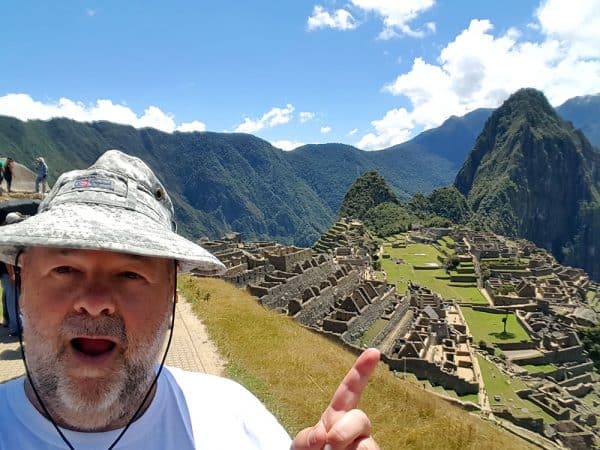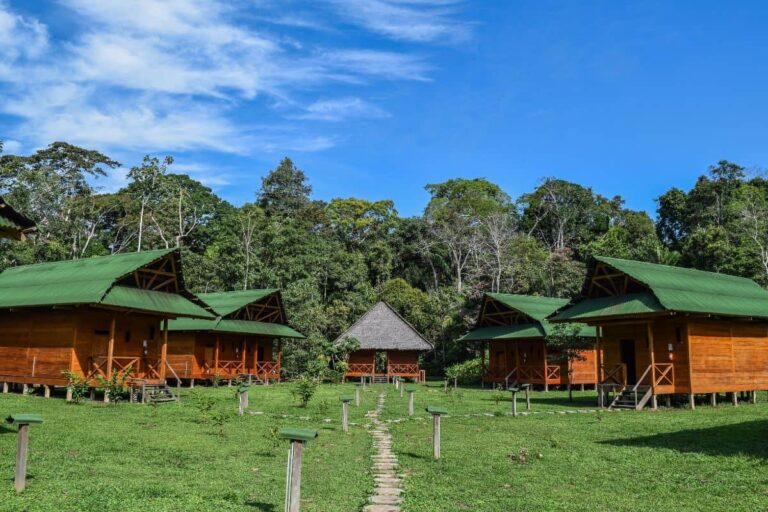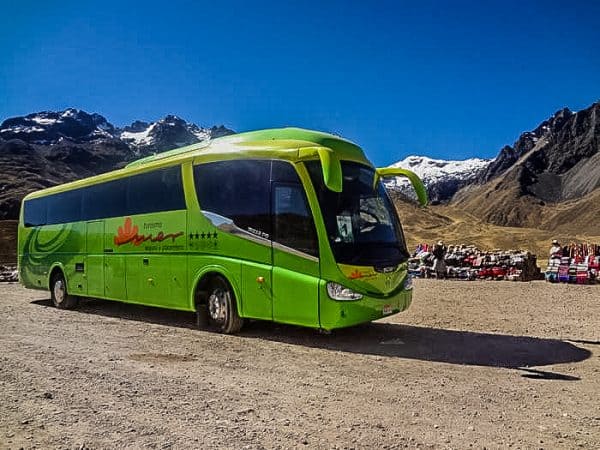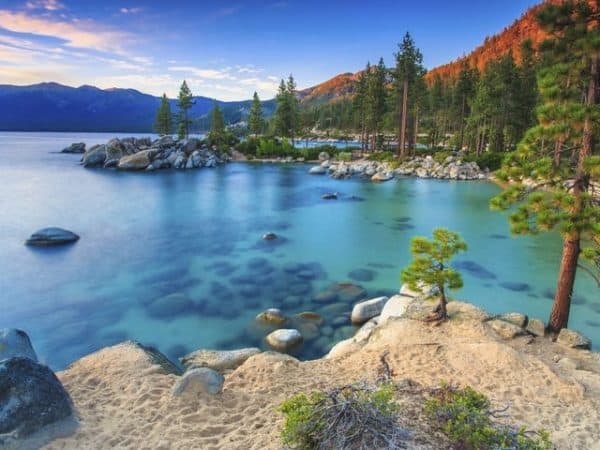24 Hours in Ollantaytambo – Fortress of the Inca

It was beginning to look like our minibus driver had taken the wrong exit from the Highway as we headed up a narrow road to nowhere. There were certainly no signs of life and the road was quickly becoming more of a track.
We were almost a week into our Peregrine Adventures Amazon and Inca tour at this stage and, even though we had been having an amazing time until this stage, things were about to elevate to a higher level. And I don’t just mean in actual altitude.
Read our trip report on the entire Peregrine tour here.
Eventually our fears were allayed as the first building appeared and then another until at last we could see a town ahead. Actually town may be too strong a word to describe Ollantaytambo, it is more a village, but what a beautiful village it is and what a history it holds.
The town centre is basic, a small square of paving and grass with a handful of trees surrounded by unassuming shops and restaurants. There are no high end hotels here and no luxury brands for sale, no fast food giants or malls. This is a town for the locals and for those on their way to Machu Picchu because this is the final place to board the Inca Rail.
Step away from the small central area you would be forgiven for thinking that you have stepped back in time. Narrow cobblestone alleyways snake out in all directions, each providing a different experience. This is a place that deserves to be on any Peru itinerary.

The meeting place for locals
Taking the alley off the southern side of the Square leads you to the local hub, a fresh produce market on the ground level is alive during the day with local farmers doing their all to convince buyers that they have the best deal, while the stall next door does the same.
The chatter of trade gives way to the smells of fresh, traditional cooking. Local women buzz around the small kitchens creating a range of family-style dishes. It is easy to tell that the food is good as every available seat is occupied, and barely a tourist in sight. Try to grab a few local pastries before exploring the top floor of the market.
Upstairs is home to the local equivalent of a Department Store. No big-name retailers here but dozens of stalls offering the daily needs for the region’s residents. Shoes, clothes, household goods, and toiletries are all to be found here. The prices are rock bottom but the range is small, they have no need for brand names here.
The home of the Inca
Leave the market and head off across the Square once more. As soon as you step beyond the shops on the northern edge you will be transported back hundreds of years to the time of the Inca, for this is the residential area which was built over 500 years ago and is largely unchanged.

Water flows down the channels running along the edges of the alleys and friendly dogs wander around as though on patrol. Occasionally you pass one of the local women, brightly coloured traditional clothing creating a wonderful contrast against the cold stone of the buildings and lanes.
You may notice the occasional home with a red bag on a stick displayed outside the front door. No, it’s not the local equivalent of Amsterdam’s seedier area, but a sign that this is a place for drinking the local beverage of Chicha, a corn beer which tasted nothing like other beers you may have sampled.
These informal “pubs” are for the locals and not tourist attractions, however, you will usually be welcomed warmly. Just don’t expect any conversation in English so brush up on your Spanish or hope to get by with some hand gestures and a big smile.
It is difficult to understand how technology and “civilisation” has bypassed a community that has regular contact with the outside world in the form of travellers but is incredibly pleasing that it has. There is no traffic noise here, no swarms of selfie-seeking Instagrammers. You are walking through living history.
This residential area remains very much as it was at its height as an Inca stronghold and many of the families are direct descendants of those who survived the Spanish invasion in the 1500s. And the houses are not the only reminders of an incredible past in this region.
The Incan marvel of Pinkuylluna
On the mountainside above this small web of laneways is the first of the town’s major archaeological wonders. Ollantaytambo was one of the last great Inca strongholds against the Spanish invasion and the ruins of Pinkuylluna give a strong indication of how they stood firm for so long.

The climb to the impressive granary complex that stands high above the town is steep and tricky in parts. Sure it’s nothing compared to the Inca Trail but the combination of terrain and altitude makes it a tough 45 minutes of work, but once you arrive you will see it was worth every laboured breath.
Wandering through the granary will have you in awe of the engineering capabilities of the Inca but, as amazing as it is, this is only the first course of your day of exploration. From the windows of this mind-blowing structure, you are presented with the view across the town to the fortress and religious centre of Ollantaytambo, the Inca Sanctuary and Citadel.

It is a challenge to resist the urge to immediately start your descent and make your way back through town to explore the Sanctuary. After all, it is only slightly less impressive than its much more famous big brother of Machu Picchu. But do resist. There is no rush and Pinkuylluna should be appreciated in its own right.
The transport system
Eventually you will succumb to the call of greater discoveries and make your way back to town. Since we originally entered the town from the east we have only one direction left to explore. The main road through town, which is still barely more than a single-lane dirt strip, heads west and takes you down to a rather risky-looking bridge that you must cross to get to the main ruins.

The train station is a few hundred metres down the river and you have to take some care not to be run down by one of the colourful moto-taxis ferrying passengers the short distance between the station and the town square. It is a fun experience to take a short trip in one of these crazy vehicles, especially if you are an average-size or plus-sized human. They are designed for the typical Peruvian that’s for sure.
After crossing the river you will find the small “tourist” market. Want a Peruvian hat, a colourful coat, a doll or a “Cusco” scarf? This is where the tourists shop.
The Citadel of Manco Inca
Beyond the market lies the main event, another stunning tiered mountainside city. Like nothing you have seen before. (Unless you have already visited Machu Picchu by this stage). The secret to getting some alone time among the ruins and the best photo opportunities is to be there close to opening time and then sneakily head in the direction against the suggested flow of foot traffic.

Even if a group of others are entering at the same time as you, it will be quite a while before your paths will cross if you have travelled in the counterclockwise direction. Once again be prepared to put in some hard climbing yards before you are rewarded with a combination of sensational views and awe-inspiring Inca construction.
As sensational as this place is just to see and experience, knowing some of the history gives you a far greater appreciation of being here. For you are not only standing upon the site where 30,000 Inca warriors repelled the equally strong forces of the invading Pizarro. but it was also the home of the great emperor Manco Inca.
History has it that Manco was able to flood the valley as his warriors and people took refuge on the tiered mountains, wiping out much of Pizarro’s cavalry and forcing him to retreat.
Unfortunately, victory celebrations were short-lived as Pizarro returned quickly with a substantially more powerful army and forced the Inca to retreat to the surrounding jungle. This is a place where you can feel the history that happened here.
Visiting Ollantaytambo
You really can see everything in a day in Ollantaytambo but if you have more time available then slow down and soak up the history and laid-back lifestyle. There are a number of accommodation options to suit any traveller and everything from local food in the markets to wonderful and cheap restaurants.

We found a place that had Condor Wings on the menu. In the end, they were just chicken wings but delicious, cheap and the name makes a great traveller’s tale.
Ollantaytambo is the perfect stop between Cusco and Machu Picchu. You can hire a private driver, use one of the many small tour companies or catch the train but however you make the journey, make sure to spend some time here.
[pinterest-gallery message=”Town may be too strong a word to describe Ollantaytambo in Peru, it is more a village, but what a beautiful village it is and what a history it holds.” columns=”3″ images=”6293,6294,6295″ spacing=”5″]
We were here as part of our memorable Peregrine Adventures Amazon and Inca Adventure tour. We had a single night at this remarkable town on our way to Machu Picchu and it has embedded itself fondly into our memories forever.
The Inca rail train departs in the afternoon for Aguas Calientes but we found there was enough time to explore the town on our first afternoon and then from an early start the second morning. So please don’t just take the train directly from Cusco to Machu Picchu, spend a night or more at Ollantaytambo for an experience that will be hard to forget.
